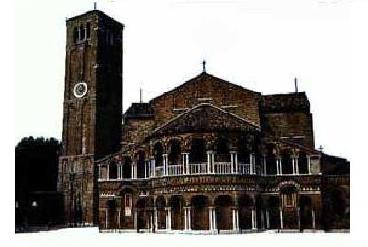Storia del vetro di Murano
La cavata dei vetrai muranesiThe "cavata" of Muranese glassmakers
1.jpg)
I vetrai muranesi hanno sempre rispettato un periodo di pausa dal lavoro, detta "cavata", periodo cioè in cui si "cava" fuoco dalle fornaci. Nel Settecento questo periodo era di due mesi e il Capitolare dei vetrai del 1766 lo giustificava con la necessità di smaltire il magazzino, concedere il riposo alle maestranze e rifare i contratti di lavoro (ricordiamo che questi venivano rinnovati ogni anno) e infine rifare i forni duramente provati da tanti mesi di fuoco. Anche oggi la "cavata" viene effettuata e coincide in genere col mese di agosto, mese in cui tutte le principali attività lavorative italiane s'interrompono. Nei primi tempi dell'arte muranese quest'interruzione era addirittura di cinque mesi e non è facile capire il perchè di un periodo di riposo così prolungato.

Glass makers of Murano always observed a pause from their work, called "cavata"; that was the period in which furnaces were put out.
In the 18th century this pause lasted two months and the "Capitolare dei vetrai" of 1766 justifies it with the necessity of clearing the
stock, giving a rest to the glassworkers, renewing job contracts (they were reneved every year) and remaking at last the furnaces so
"sorely tried" after many months of melting cycles. At the beginning of the glass art in Murano this interruption lasted five months and it is not easy
to understand the rason of so a long rest.



Paolo Zecchin Via Cappuccina 13 Mestre Venezia
The "cavata" of Muranese glassmakers
1.jpg) | I vetrai muranesi hanno sempre rispettato un periodo di pausa dal lavoro, detta "cavata", periodo cioè in cui si "cava" fuoco dalle fornaci. Nel Settecento questo periodo era di due mesi e il Capitolare dei vetrai del 1766 lo giustificava con la necessità di smaltire il magazzino, concedere il riposo alle maestranze e rifare i contratti di lavoro (ricordiamo che questi venivano rinnovati ogni anno) e infine rifare i forni duramente provati da tanti mesi di fuoco. Anche oggi la "cavata" viene effettuata e coincide in genere col mese di agosto, mese in cui tutte le principali attività lavorative italiane s'interrompono. Nei primi tempi dell'arte muranese quest'interruzione era addirittura di cinque mesi e non è facile capire il perchè di un periodo di riposo così prolungato. |

| Glass makers of Murano always observed a pause from their work, called "cavata"; that was the period in which furnaces were put out. In the 18th century this pause lasted two months and the "Capitolare dei vetrai" of 1766 justifies it with the necessity of clearing the stock, giving a rest to the glassworkers, renewing job contracts (they were reneved every year) and remaking at last the furnaces so "sorely tried" after many months of melting cycles. At the beginning of the glass art in Murano this interruption lasted five months and it is not easy to understand the rason of so a long rest. |
